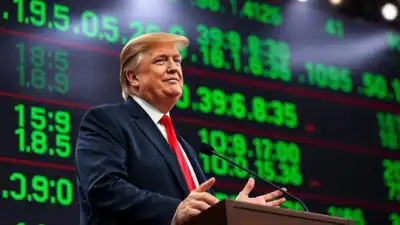US stock markets opened sharply higher on Friday following the release of stronger-than-expected April jobs data. The report showed that the economy added 177,000 jobs during the month, while the unemployment rate remained steady at 4.2 percent. The data boosted investor confidence and fuelled early gains across major indexes.
Shortly after the opening bell, the Dow Jones Industrial Average rose by 434.80 points to 41,187.76, gaining 1.07 percent. The S&P 500 advanced 62.88 points, or 1.12 percent to 5,667.02, putting it on track for its ninth consecutive day of gains. If it finishes higher, it will mark the index’s longest winning streak since November 2004.
The Nasdaq Composite added 174.43 points, or 0.98 percent, reaching 17,885.17.
Gold prices climbed by 1.15 percent to $3,259.40 per ounce, reflecting increased interest in safe-haven assets. Oil prices edged down 0.49 percent to $58.95 per barrel. The yield on the US 10-year Treasury note rose to 4.289 percent, up 0.058 percentage points from the previous session.
The US dollar strengthened slightly, with the euro trading at $1.135, up 0.50 percent. Meanwhile, market volatility eased, as the CBOE Volatility Index (VIX) dropped 7.48 percent to 22.76.
Following the release of the job report, President Donald Trump reiterated his call for the Federal Reserve to lower interest rates. In a post on Truth Social, he wrote, “Consumers have been waiting for years to see pricing come down. NO INFLATION, THE FED SHOULD LOWER ITS RATE!!!”
Meanwhile, Futures for the S&P 500 gained 0.3% before the bell and were on track for a ninth straight day of gains. Futures for the Dow Jones Industrial Average added 0.4% and Nasdaq futures ticked up 0.2%.
Exxon Mobil’s reported its lowest first-quarter profit in years, stung by weaker crude prices and higher costs. Its shares ticked up less than 1% before markets opened Friday.
Shares in rival Chevron fell more than 2% after it also reported its smallest first quarter profit in years.
A barrel of US benchmark crude fell below $60 this week, a level at which many producers can no longer turn a profit. On Friday, a barrel of US crude fell another 66 cents to $58.58. Brent crude, the European standard, declined 64 cents to $61.49 per barrel.
Energy prices mostly have been in decline since Trump’s inauguration in January, with the cost of a barrel of oil sliding as much as $20. At this time last year, a barrel of US crude cost $78.
Earlier, European and Asian markets rose on Friday following the positive momentum from Wall Street, as China indicated it was considering a US offer to negotiate steep tariffs. US markets had surged on Thursday, buoyed by strong earnings results from tech giants Microsoft and Meta, which helped alleviate ongoing economic concerns.
“Equity markets are largely rising this morning, supported by the positive overnight performance on Wall Street and China’s openness to trade negotiations,” said Jim Reid, managing director at Deutsche Bank.
Apple and Amazon both reported weaker-than-expected outlooks, with tariffs hurting business confidence, just after markets closed on Thursday.
In Europe, Paris and Frankfurt rose over 1% following a public holiday, with markets brushing off official data showing that eurozone inflation remained steady at slightly above the European Central Bank’s target of 2%.
London also saw gains, with mining and commodity stocks—particularly sensitive to Chinese demand—performing well amid growing optimism around potential China-US talks, according to analysts.
China’s commerce ministry stated on Friday that it was evaluating a US offer to negotiate tariffs, but stressed that Washington must be prepared to remove levies that have disrupted global markets and supply chains.
President Donald Trump’s tariffs reached as high as 145% on many Chinese products in April, prompting China to retaliate with its own 125% duties on imports from the US.
Trump has repeatedly claimed that China reached out for tariff talks, and this week, he expressed optimism, stating that there was a “very good chance we’re going to make a deal.”
Many countries face a 90-day deadline, expiring in July, to reach an agreement with Washington and avoid higher, country-specific tariff rates.
Traders are also awaiting Friday’s US jobs data for April, a key indicator that will be closely scrutinized for signs of the US central bank’s future interest rate decisions.
